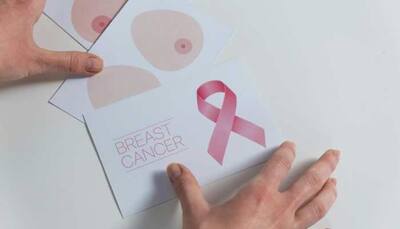About one-third of Los Angeles Unified students miss close to a month of school — or more — in a given school year. On-campus health care may play a role in helping students attend school more consistently . When health researchers looked at the outcomes of students after they visited L.
A. school health clinics, they found attendance stabilized or improved — particularly for students who sought mental health treatment. “A lot of times there may be health challenges that are getting in the way of students coming to school ready to learn every day,” said pediatrician Rebecca Dudovitz.

Jordan High School senior Katherine Castro was one of the students who advocated for the recent re-opening of her school’s wellness center. “I think a lot of the students are going to go there, especially because it's at our school,” Castro said. “It feels safer, like, trustworthy.
” There are currently 20 wellness centers on LAUSD campuses that are open to students and community members and run by outside healthcare providers. To continue expanding, the district will have to designate more funding toward building and renovating space for health care on school campuses and find community partners willing to serve both students and their families. “In previous bond efforts and in future bond efforts the allocation of resources for this type of partnership and venture will continue to be a priority for all of us,” said Alberto Carvalho, LAUSD’s superintendent, at the Aug.
5 ribbon-cutting for the Jordan High School clinic. Two days later, the district’s board of education approved a ballot measure asking voters to authorize $9 billion to repair and upgrade schools . District data shows Jordan students and their families have some of the most significant healthcare needs in the Los Angeles metro area.
Watts is considered a medically underserved area that lacks enough providers to serve the community. “The students that live here encounter the highest rates of asthma in the city for which we serve at LAUSD,” said Ron Tanimura, director of student medical services and Medi-Cal programs. Castro, the high school senior, said it can be challenging to book a doctor’s appointment in Watts.
She remembered some of her peers were excluded from the soccer team last year when they couldn’t get their physical exams. “Sometimes, even for me, when I really need medical attention, they say that they can't see you until three months or four months, five months later,” Castro said. The ribbon-cutting at Jordan High School’s wellness center represented a second chance.
Watts Healthcare first opened the clinic in 2013 after decades of working in a smaller two-room facility within the school, but it shuttered in March 2020 and never reopened. The organization didn’t respond to LAist’s interview requests, but speakers during the 2024 ribbon-cutting said the pandemic exposed challenges at many community health centers . One issue for school-based health centers in California is that there is no single funding source .
Instead, clinics often rely on a mixture that includes reimbursement from the state’s public insurance program for low-income people (Medi-Cal), donations, and public and private grants. The new operator, UMMA Community Clinic , expects to serve about 1,000 patients a month; based on its work at other school sites, about 80% will be community members and 20% will be students. “It's building community trust,” said UMMA Community Clinic President and CEO Adel Syed.
“When you have the trust, I think the doors will stay open, and the community will continue to bring, multi[ple] generations of families.” Research shows school-based health centers are associated with better student health and academic outcomes , including lower dropout rates . The nonprofit Los Angeles Trust for Children’s Health financially supported the first LAUSD school-based health clinics in the 1990s and helps facilitate research based on student health and academic data.
The Trust found annual wellness center visits in the 2022-23 school year exceeded the number of visits before the pandemic and that a majority of student patients (58%) visited their school’s wellness center at least twice. The district offers several healthcare options for students and community members at select campuses. Wellness centers : Clinics built by LAUSD, and run by outside partners that provide primary care, dental, and mental health services to students and community members.
School-based health centers : LAUSD-operated clinics that primarily provide immunizations and physical exams to students and siblings from birth to 19. Vision care: There are three vision clinics embedded on LAUSD campuses in San Pedro, Pacoima, and Exposition Park. The nonprofit Vision To Learn also provides eye exams and glasses to Southern California students.
Dental care : The district collaborates with outside providers to connect students to dental care. For example, a USC School of Dentistry mobile team serves students in central L.A.
Illness, safety concerns , and a lack of access to transportation can all prevent students from attending school , but the rate of chronically absent students who missed at least 10% of school soared when students returned in-person during the pandemic. When health researchers looked at the attendance of LAUSD students after they visited their school’s health clinic, it stabilized or improved — particularly for students who got mental health treatment. About a third of LAUSD students were chronically absent in the 2022-23 school year compared to the statewide rate of one-in-four students.
“A child who's really struggling with untreated depression or anxiety, or even having difficulty focusing with ADHD — being able to get those health needs met by a doctor or other clinician right on your school campus can then support that student's ability to show up to school every day,” said pediatrician Rebecca Dudovitz, who co-authored the Journal of Adolescent Health study on attendance . There is also research that indicates school health clinics may help students feel more connected to their education . When students believe adults at school and their peers support and care for them they’re more likely to succeed inside and outside of the classroom .
Jackie Rivas graduated from Garfield High this year and learned about the East L.A school’s wellness center when she needed a physical to play tennis. She joined the center’s student advisory board her senior year and was soon telling her peers about the access to mental health care, vaccines, birth control and sexually transmitted disease testing.
“Knowing that I have those resources at my school steps away from many of my classrooms, it was very comforting,” Rivas said. Her time engaging with the health center also increased her interest in studying biology at UCLA and pursuing a career in healthcare. “It's the idea of potentially being the bridge between someone and their recovery, the patients and their stability — it's that idea that kind of fuels my passion for it,” Rivas said.
A post shared by GHS Student Advisory Board (@garfieldbulldogssab) Stephanie Vazquez also served on the advisory committee her senior year and remembers using what she learned to encourage a peer to get the HPV vaccine, which can prevent infections that cause cancer . “We're still young, so maybe we should really start, we should really care for ourselves,” Vazquez said. Another conversation with the wellness center staff about self-care inspired her to make time for a bubble bath once a month.
“It makes me feel like a little bit of weight was pulled off me,” Vazquez said..


















